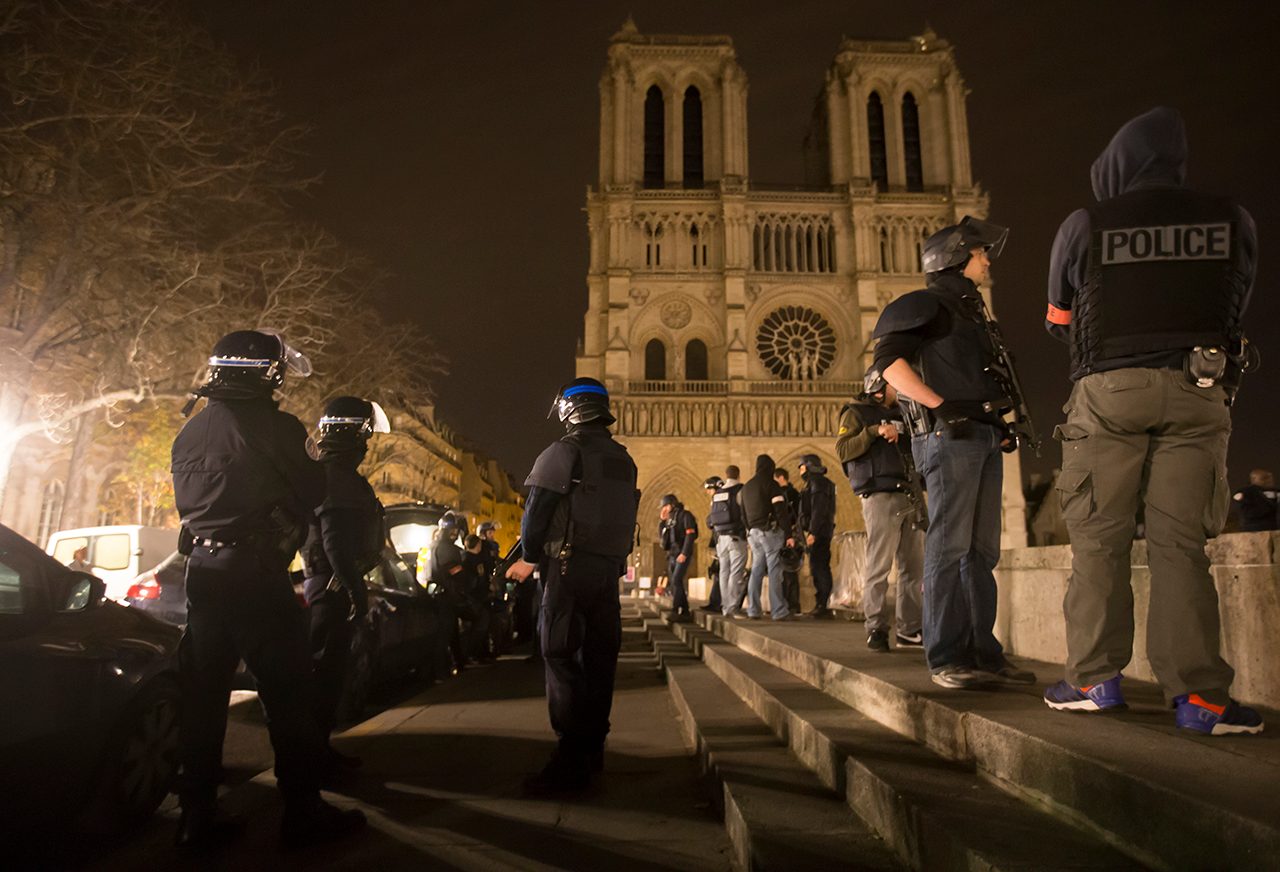SUMMARY
This is AI generated summarization, which may have errors. For context, always refer to the full article.

PARIS, France (2ND UPDATE) – French investigators believe there were 3 teams involved in Friday’s attacks on Paris and are probing possible links to the conflict in Syria in a joint inquiry with Belgium.
Seven of the gunmen and suicide bombers who took part in the carnage, which killed 129 and was claimed by Islamic State (ISIS) jihadists, died in the bloodshed.
But the discovery of a black Seat car containing several AK47 rifles, which was used by the attackers at several locations, has raised questions about others who may still be at large in a probe which is increasingly pointing to Belgium.
How were the teams organized?
Investigators are working on the theory that there were three teams.
The initial strike was by a team of suicide bombers outside the Stade de France where the first blew himself up at 9:20 pm (2020 GMT) while the French and German national football teams were playing a friendly. The other two set off their explosive belts at 9:30 pm and 9:53 pm.
Despite US media reports, there is no proof any had a ticket to the game, investigation sources say. It remains unclear why the first attacker blew himself up outside the stadium in an area with no people.
The second team entered the Bataclan concert hall at around 9:40 pm. Among them was 29-year-old Paris native Omar Ismail Mostefai. Three attackers, all wearing suicide vests, were killed during a counter-assault by French security forces.
Seven people close to Mostefai are currently in custody in Belgium.
According to a source close to the French inquiry, the third team carried out three shooting attacks on several bars and restaurants in central Paris at 9:25 pm, 9:32 pm and 9:36 pm, firing hundreds of bullets.
A suicide bomber, identified 31-year-old Frenchman Brahim Abdeslam, also blew himself up outside a bar at 9:40 pm on Boulevard Voltaire.
Abdeslam is one of three Belgium-based brothers who are suspected of involvement in the attacks. The second brother is in custody while the third, 26-year-old Salah Abdeslam, is thought to be on the run. Brussels has issued an international arrest warrant for him while the French police have issued a wanted poster for him.
The Syrian connection
Since 2012, jihadists heading to Syria have been the biggest concern for Europe’s counter-terror services, with France and Belgium among the countries most concerned by the phenomenon.
Although the security forces had opened an “S file” on Mostefai – a category for suspects who are potentially radicalised – he passed under the radar, and in all probability spent some time in Syria in 2014. Did he return with instructions? In April 2014, another French jihadist called Ibrahim Boudina was arrested after returning from Syria on suspicion of planning an attack along the French Riviera.
What of the other alleged attackers? Are we dealing with a group of jihadist veterans who fought in Iraq or Syria? At the Bataclan, the attackers were overheard speaking about both places.
Investigators remain cautious over the Syrian passport found near the body of the first suicide bomber to blow himself up by the stadium. The name on it is unknown to French anti-terror authorities.
A source close to the inquiry said it remained unclear whether the person the passport was issued to was in fact one of the suicide bombers. Greek police said they have been asked for information on two Syrians who registered as refugees in recent months but that information has not been confirmed, with French investigators seeking information on just one name, the source said.
Complexities
The attackers used automatic weapons and a number of Kalashnikovs were found on Saturday evening in an abandoned black Seat car in the eastern suburb of Montreuil. The car is believed to be the one used in several of Friday’s attacks.
There must also have been an explosives specialist involved who put together the suicide belt and he is unlikely to have taken part in the operation since his skills are too precious, experts have told the Agence France-Presse.
The inquiry will also focus on the funding used by the assailants and its sponsors. In several recent attacks in France, such as the January attack on the Charlie Hebdo magazine, investigators have found links between the assailants and French-speakers in Syria.
Such questions are unlike to be answered by the interrogation of people close to Mostefai, who appears to have cut ties with at least some of his family.
Inter-European cooperation
International cooperation is the Achilles’ heel of European counter-terror operations. ISIS has recognised this and called on its militants to hit neighboring countries where they are less likely to be known and identified.
The inquiry into a foiled attack on a high-speed train between Amsterdam and Paris in August showed major weaknesses in the exchange of information between the respective intelligence services. The Paris attacks will shine a light on whether efforts to improve intelligence-sharing have born fruit. – Nicolas Gaudichet, AFP/Rappler.com
Add a comment
How does this make you feel?
There are no comments yet. Add your comment to start the conversation.